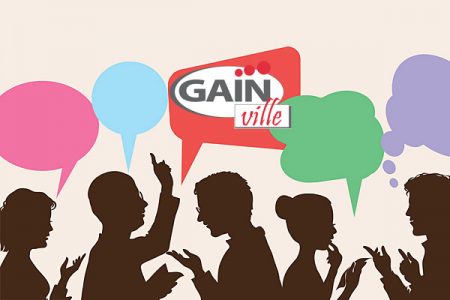“Well I can understand it, but I just can’t speak it.”
This is the explanation I often give to my Filipino family when they ask about my proficiency in Tagalog—the official language of the Philippines. In fact, it’s a common explanation given by bilingual children when it comes to their grasp on the languages they’re only exposed to at home. It highlights a protruding cornerstone of the bilingual struggle: the inability to speak—despite the ability to understand—one’s own mother tongue. This problem is so prevalent that it constitutes its own type of bilingualism: receptive bilingualism.
But what causes it? Why is it so easy for us to understand our heritage languages, yet so difficult to actually speak in them? We can try to find the answer in the very machine behind language processing: our brains.
While you might’ve heard that language processing as a whole occurs on the left side of the brain, the technical reality is far more nuanced than a simple matter of shared orientation. While our abilities to speak and understand language do occupy the same hemisphere, they come from different areas of the cerebral cortex. The part that helps us comprehend auditory speech, called Wernicke’s Area, is in our temporal lobe, whereas the part that helps us produce speech of our own, called Broca’s Area, is in our frontal lobe. As far as we know, it isn’t necessarily harder to tap into Broca’s Area than it is to tap into Wernicke’s, but it can logically be more difficult to form your own sentences than it is to understand ones that are already laid out for you.
Basic, passive comprehension often feels like being on the guessing end in a game of Pictionary—one where you have a seasoned artist illustrating all the cards for you. In a linguistic sense, that artist might be a native speaker of your second language, who already knows their way around effective communication and syntax construction. More active production of speech, on the other hand, can feel far more hopeless—for instance, like being asked in that same game of Pictionary to draw an object you’ve never seen before. What should its shape look like? What about its color? What are the parts that hold it together? Even if you can answer all those questions yourself, how would you go about replicating the picture you’ve constructed in your mind? As an inexperienced artist—or novice second-language speaker—you’re forced to draw upon a limited, cloudy well of knowledge to create your own sketch, which is harder than identifying clear, well-executed images you’re already familiar with. The reason why? Seeing and understanding are passive activities that only require you to exercise sensation and perception. Meanwhile, actions like drawing and speaking are active activities, which add the variable of producing comprehensible messages to the already-complicated linguistic mix.
 But this issue goes deeper than our brain chemistry alone; in situations where the heritage language is seen as inessential, or even embarrassing to a bilingual, they may shy away from speaking it altogether. They may make an effort—consciously or unconsciously—to erase their ties with their culture completely. In its purest sense, this process starts with the neglect of language.
But this issue goes deeper than our brain chemistry alone; in situations where the heritage language is seen as inessential, or even embarrassing to a bilingual, they may shy away from speaking it altogether. They may make an effort—consciously or unconsciously—to erase their ties with their culture completely. In its purest sense, this process starts with the neglect of language.
In my own personal experience, being raised in a Tagalog-speaking household while attending American English-speaking public schools all my life has certainly been the cause of more than one moment of cultural confusion and resentment. Such moments are by no means specific to me; they seem to be a trademark of the entire bilingual experience.
Incorporating a foreign mother tongue into your everyday expression makes your distinct cultural identity all the more apparent. For bilingual children, this often causes unwanted attention, and feelings of ostracization. In such situations, bilingual children don’t even realize that they’re distancing themselves from their culture. They do it by nature; in order to assimilate and fit in with their peers. This motivation feeds into a vicious cycle of linguistic erasure and neglect.
Our environment has a drastic effect on our psychology, especially at a young age. Bilingual American children tend to be caught in a special situation, feeling stretched thin by polar pulls towards both American culture and that of their family’s mother country. All opportunities to practice their heritage languages require them to be vulnerable, exposing them to potential criticism from either side: verbally tapping into their cultural identities in such a manner immediately differentiates them from other children that don’t share in it. Meanwhile, when trying to speak their mother tongue to their families, they may be criticized by relatives for lingering American twangs to their pronunciations. It’s easy to become trapped in cultural limbo: feeling as though you’re not quite fully “American”, but not quite purely identifying with your ethnic culture either. This displacement causes a lack of confidence when speaking the culture’s language, as well as inconsistency and lack of discipline when it comes to learning more about it. Thus, receptive bilinguals often distance themselves from the heritage language at an early age until it becomes a foreign speech, albeit familiar sound.
There are, however, ways to turn receptive bilingualism into productive bilingualism—where bilinguals are actually able to produce their own speech. Total, unapologetic immersion in the heritage language is one of those ways, which makes it almost required for practice and interaction to sustain. Moreover, it’s important to create a safe environment for receptive bilinguals to be comfortable in practicing their mother tongue as often as possible. This means fostering culturally informed and diverse communities, as well as understanding families that accept the inevitable mistakes in a bilingual’s journey towards mastery of their heritage language. Ultimately, the development of productive bilingualism comes down to not only rote practice on the part of the language learner, but genuine acceptance and encouragement from their own support systems.


Recent Comments